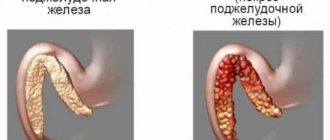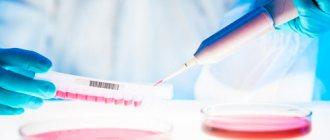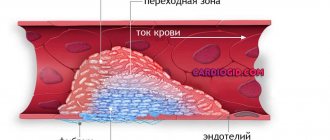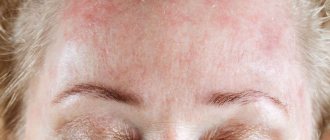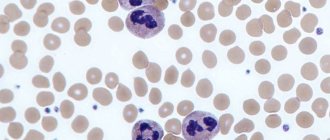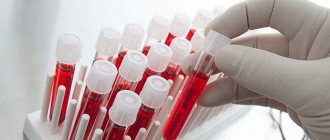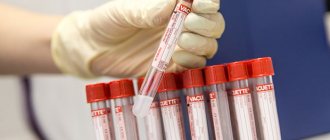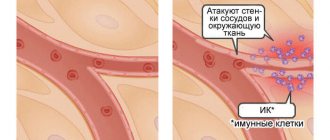Leukocytes, or white blood cells, are divided into three groups:
- Tissue macrophages or phagocytes. Macrophages are found inside organs and provide tissue protection. The mechanism of their work is that they capture the infectious agent and destroy it. These cells do not circulate throughout the body, so they cannot be detected in a blood test. But their predecessors, monocytes, are recorded in the bloodstream.
- Granular leukocytes. These cells contain granules or inclusions - vesicles with active substances, which are released from the cell in the event of invasion of infectious agents. Granular leukocytes take over the fight against bacteria. These cells include: neutrophils, basophils and eosinophils.
- Agranular leukocytes (agranulocytes). There are no inclusions in the structure of such leukocytes. These include lymphocytes. There are three types of agranular white blood cells: natural killer (NK) cells, T lymphocytes, and B lymphocytes. Each group of cells has its own characteristics and performs different functions.
Killer cells
Figure 1. Lymphocytes attack a cancer cell.
Image: animaxx3d / Depositphotos Natural killer (NK) cells are an important component of the immune system. The function of these cells is to destroy tumor cells and virus-infected cells of the body.
Tumor cells are formed in the human body every day, and it is the normal functioning of NK cells that is necessary to prevent tumors from developing. Natural killer cells get their name because they find and destroy damaged cells themselves.¹
T lymphocytes provide the body with a cellular immune response. This means that they form a chain of cells that act on the causative agent of the disease in order to destroy it. T-lymphocytes are different, they include:
- T-helpers. These cells find the infectious agent and present it to killer T cells. They are able to secrete special substances: cytokines and growth factors that activate the immune response.
T-helpers are not capable of destroying pathogens, but without them the functioning of cellular immunity is impossible. The human immunodeficiency virus (HIV) infects these cells. As a result of prolonged carriage of HIV without treatment, acquired immunodeficiency syndrome (AIDS) develops. AIDS is a deadly disease in which a person’s immune system does not work and the body becomes unable to resist the bacteria, viruses and fungi around it. Patients with AIDS experience severe, combined forms of infections that often do not respond to therapy.
At the same time, too strong activity of T-helper cells is also not the norm. In this case, they can react to normal cells of the body and lead to their destruction. Such conditions are called autoimmune diseases. The most common of them are autoimmune thyroiditis (Hashimoto's disease), type 1 diabetes mellitus, multiple sclerosis, rheumatoid arthritis, and systemic lupus erythematosus.
- Killer T cells. They are otherwise called T-cytotoxic lymphocytes. The function of killer T cells is to destroy cells infected with viruses and tumor cells. These lymphocytes differ from natural killer cells in that they react to specific antigens that T helper cells “indicate” to them.
- T-suppressors or T-regulators. Such cells act on T-helper and T-killer cells and reduce their activity in order to avoid an excessive immune response.
B lymphocytes are cells that provide the humoral immune response. This type of response involves antibodies. The body needs this immunity to neutralize toxins and pathogens that pathogenic bacteria produce. Antibodies are able to bind to pathogens or toxins, neutralize them and attract tissue macrophages to them. Antibodies are distributed throughout the body, they are found in the blood, intercellular fluid, and on mucous membranes.
B lymphocytes are of the following types:
- Actually B cells. These are lymphocytes that have not yet come into contact with antigens. After meeting a foreign agent, they are activated and transform into another type of B lymphocyte.
- Memory B cells. They have already encountered the antigen and “remembered” it. If the same pathogen is re-introduced, memory cells are able to quickly react to it. These are long-lived cells. Acquired immunity, which appears after an illness or vaccination, is based on the work of these lymphocytes.
- Plasma cells. Such lymphocytes do not live long and are formed in large numbers during the introduction of infectious agents. Their function is to produce antibodies.²
Figure 2. Types of lymphocytes. Image: mikrostoker/Depositphotos
Types of lymphocytes
When the bone marrow releases a young lymphocyte into the bloodstream, it is not yet ready to perform its most delicate functions. Some of the young cells, lymphocytes, go to the thymus, or thymus gland, and there they must undergo maturation or “training.” What does "training" mean? A young lymphocyte must become familiar with the antigens that our body has encountered throughout life, starting from prenatal development. After maturation, thymus-dependent lymphocytes (T-lymphocytes) will begin to recognize antigens, understand that these are genetic strangers and will be ready to carry out their tasks.
T lymphocytes
There are several types of T-lymphocytes.
The first type is killer T-cells. Killers are killers. They are the ones who are sharpened to recognize a genetic stranger and try to kill him right away.
The second type is T-helper cells, or helper cells. It is the T helper cells that will include the following cells that will produce antibodies or protective protein structures for us.
The third type is T-suppressors - those cells that will stop the immune response.
And so, if a genetic alien enters the human body, the killers will be the first to recognize it and will try to kill it immediately. What can act as a genetic stranger? These are viruses, bacteria, parasites, fungi, and cancer cells that can appear every second. Cells of the body in which a failure occurred at the genetic level. If a person has food intolerance, then, unfortunately, they can also turn into genetic strangers and also deplete the lymphocyte component of the immune system.
B lymphocytes
These are also lymphocytes, which, having emerged young from the bone marrow into the bloodstream, rush to the lymph nodes, to the spleen, or to the liver, where they will also mature. The main function of B cells is to produce representatives of humoral immunity, or blood immunity, for us. It is the B cells that will produce antibodies that will fight viruses, bacteria, and other genetic invaders.
NK cells or natural killer cells
This is a group of cells that will primarily be focused on protecting us from cancer. First of all, natural killers will work in antitumor defense and antiparasitic defense. NK cells are the main types of lymphocytes.
Blood test for lymphocytes
A blood test for lymphocytes is taken as part of an extended general blood test with a leukocyte formula. The formula prescribes the absolute number and relative content of all types of white blood cells. Blood can be donated from a finger or a vein.
In test forms you can find different designations for lymphocytes: LYMPH, LYM, LYM%. The unit of measurement is the number of cells per nanoliter of blood, as well as their percentage among all leukocytes.
Indications for analysis
A general blood test is the most accessible, widespread and universal method for diagnosing various diseases and conditions. This analysis is indicated for undergoing a routine medical examination, before hospitalization, before and after surgery, for diagnosing diseases when first seeking medical help. Therefore, if the patient comes to the doctor in a timely manner, changes in the content of lymphocytes in the blood are detected quickly.
A doctor may suspect disturbances in the formation of lymphocytes and prescribe an analysis in the case of frequent and/or long-term infectious diseases. Sometimes these diseases can be difficult, difficult to treat and lead to complications.
Preparing for analysis
In order for a blood test to show an accurate result, proper preparation for it is necessary:
- Blood is taken for analysis on an empty stomach. The day before you should not eat fatty, spicy or sweet foods. It is better if the dinner is light and at least 8 hours pass before the analysis.
- Before the study, you need to get enough sleep and eliminate physical and emotional stress.
- You should avoid overload on the day before donating blood: do not exercise too much, do not go to the bathhouse or sauna, and maintain a drinking regime.
- It is necessary to refrain from smoking at least 2 hours before donating blood for analysis.
- If you are taking any medications, you must tell the medical staff when your blood is drawn.
- Norms of lymphocytes in the blood - tables with norms for women, men, children
- The normal number and percentage of lymphocytes differ depending on gender and age.
Table 1. Norm of lymphocytes in the blood of women and men.
| Absolute quantity | Percentage | |
| Among women | 1 - 3.4 x 10⁹/l | 17-38% |
| In men | 1 - 4.8 x 10⁹/l | 17-38% |
Table 2. Norm of lymphocytes in the blood of children.
| In children | Up to 1 month | 1-6 months | 6-12 months | 1-6 years | 7-12 years | 13-15 years old |
| Absolute quantity | 1.3-4.4 x 10⁹/l | 2.7-12.3 x 10⁹/l | 2.4-10.2 x 10⁹/l | 1.6-9.5 x 10⁹/l | 1.3-6.7 x 10⁹/l | 1.26-5.8 x 10⁹/l |
| Percentage | 22-25% | 45-70% | 44-66% | 30-61% | 29-50% | 28-45% |
Leukocyte crossover
In children, there is a condition called leukocyte crossover. A child is born with approximately the same ratio of neutrophils and lymphocytes as an adult: neutrophils 60-65%, lymphocytes 16-34%. After birth, the number of neutrophils gradually decreases, and the number of lymphocytes increases. By the fifth or sixth day of life, their content is equalized and is approximately 45%. This is the cross of the leukocyte formula. Further, up to 4-5 years, lymphocytes in the blood test will dominate and make up up to 70% of all white blood cells. At the age of 5-6 years, a second crossover occurs: the proportion of cells equalizes again, after which the composition of the blood gradually approaches the picture of an adult, when there are more neutrophils than other leukocytes.
Lymphocytes - what are they, what are they?
Lymphocytes are one of the components of white blood cells; a complete blood test for lymphocytes . They play an important role in the formation of immune responses. Their function is to recognize pathogens and mutated own cells. After identifying a foreign object, lymphocytes destroy it in one way or another: phagocytosis, production of special antigens. To destroy their own cells that have degenerated into cancer or have undergone other changes, lymphocytes send a special chemical signal that causes such a cell to start the process of self-destruction. In addition to a general blood test for lymphocytes, a biochemical blood test is performed at the MedArt Medical Center.
There are three types of these cells:
- T lymphocytes. They mature in the thymus. They play an important role in the fight against foreign bodies and infections. Some T-lymphocytes perform regulatory functions and are responsible for the duration and strength of the immune response. It is these cells that are affected when infected with HIV.
- B lymphocytes. Their main task is to produce antibodies against viruses and other infectious agents. In addition, they are able to retain information about past diseases, thereby creating permanent immunity.
- NK – cells. Their main function is to detect and eliminate body cells that have degenerated into malignant ones.
Lymphocytes are formed in the red bone marrow; their young, immature forms are called lymphoblasts. Maturation occurs in several stages, occurring not only in the bone marrow, but also in the lymphoid nodes and other organs of the lymphatic system.
The appearance of an increased number of lymphocytes can serve as a marker of bone marrow pathologies and the development of tumor processes in it. An increase in the level of lymphoblasts is also recorded during prolonged infectious processes. In this case, this serves as a sign of depletion of the body's defenses. The immune system does not have time to prepare a sufficient number of lymphocytes to fight the pathogen, and this becomes the reason for the appearance of a large number of lymphoblasts in the blood.
Causes of elevated lymphocytes
An increase in the level of lymphocytes in the blood is called lymphocytosis. Lymphocytosis can be:
1. Absolute: when the number of lymphocytes in the blood is increased - more than 4.8 x 10⁹/l in adults.
The causes of absolute lymphocytosis may be:
- Various viral infections (respiratory infections, herpetic diseases, chicken pox, mononucleosis, cytomegalovirus, viral hepatitis).
- The initial stage of HIV.
- Toxoplasmosis.
- Damage to the thyroid gland with a decrease in its function (hypothyroidism).
- Malignant tumors (lymphomas, leukemias).
- Vasculitis.
- Whooping cough.
- Tuberculosis.
- Strict diet, fasting.
- Eating more carbohydrates than proteins and fats.
Lymphocytosis can also occur during menstruation and in the days before it, after heavy physical labor, during severe stress, after vaccination.
2. Relative: in case of an increase in the percentage of lymphocytes among other white blood cells. In this case, their share in adults is more than 38%. In this case, the number of lymphocytes may be within normal limits, and their content may be higher due to a decrease in the number of other leukocytes. The most numerous in the leukocyte formula of adults are neutrophils; normally they contain 47-72%. Accordingly, with a decrease in their number in the blood, the proportion of lymphocytes can significantly increase. And relative lymphocytosis will be the first thing that catches your eye when you receive the result of a blood test. The following conditions can lead to this:
- Viral infections (chickenpox, influenza, measles, hepatitis).
- Toxoplasmosis.
- Chronic bacterial infections.
- Fungal diseases.²
Types of lymphocytosis
An increase in the number of lymphocytes in women is associated with a major source of dysfunction. Experts identify several types of pathology:
- Reactive – provoked by diseases that cause disruption of the functionality of the immune system. The list is presented: infectious mononucleosis, tuberculosis, syphilis, HIV infection, severe depletion of the body. To normalize test results, it is necessary to carry out therapy for the infectious disease.
- Malignant – cancerous tumors provoke the formation of acute or chronic lymphocytosis. The phase of the disease directly depends on the stage of development of the neoplasm.
- Post-infectious – deviations in tests are caused by previous infections. Lymphocytosis is accompanied by influenza, chickenpox, rubella, hepatitis, scarlet fever, and measles.
A sharp increase in the number of lymphocytes in the blood should alert a woman. Sometimes deviations make it possible to timely detect latent pathological processes or the initial stages of malignant neoplasms. Small changes should not be ignored; patients need to reconsider their usual diet, eliminate bad habits, and do not forget about seasonal vitamin therapy.
Consequences of lymphocyte deviation from the norm
A decrease in the number of lymphocytes in the blood leads to dysfunction of the immune system. In this condition, the body has poor resistance to viral infections, and a person can suffer from various diseases with difficulty and for a long time.
An increase in lymphocytes in the blood indicates the presence of an infection in the body, which may not manifest itself clinically.
Relative lymphocytosis indicates a violation of the formation of other leukocytes, including neutrophils. In this case, it will be difficult for a person to tolerate bacterial infections.
How to reduce the level of lymphocytes in the blood
The most common cause of high lymphocyte counts is infection, but sometimes leukemia may be the cause. Therefore, in the case of lymphocytosis, it is important to find its cause and prescribe treatment. Various medications are usually used: steroid hormones, immunosuppressants. Nutritional supplements can also be used: echinacea, fish oil.
Figure 3. Blood cells in a healthy person and in leukemia. Image: mikrostoker/Depositphotos
Indications for analysis
A general blood test for lymphocytes is prescribed if there is a suspicion of an increase or decrease in their number. The analysis can be prescribed for other reasons; it allows you to obtain a lot of valuable data about the state of the blood and the whole body. The main indications include:
- Detection of the immune response to the presence of pathogenic microorganisms.
- The state of human immunity.
- Physical and chemical composition of blood.
- Preventive analysis - to detect hidden changes in the blood formula that do not manifest themselves with specific symptoms.
How to increase the number of lymphocytes in the blood
Depending on the condition, the doctor may prescribe the following treatment methods:
- Combination antiretroviral therapy for HIV.
- Antibiotics, antiviral, antifungal or antiparasitic drugs to treat chronic diseases.
- Gamma globulin for preventing infections in people with B-cell lymphocytopenia
- Bone marrow stem cell transplantation for some forms of cancer (such as leukemia, multiple myeloma, and some types of lymphoma)
If a decrease in lymphocytes in the blood is a side effect of taking a medication (such as immunosuppressants and steroids), your doctor may reduce your dose or recommend stopping it.
People with low lymphocyte counts should strengthen their immune system by eating a nutrient-rich diet that provides adequate amounts of protein, vitamins and minerals.³
These foods will help strengthen your immune system:
- Citrus fruit. Almost all citrus fruits contain large amounts of vitamin C, which is important for the functioning of the immune system.
- Red bell pepper. It is a rich source of vitamin C and beta-carotene. Beta-carotene is converted into vitamin A in the human body, which helps maintain healthy eyes and skin.
- Broccoli. Broccoli is rich in vitamins A, C and E, as well as fiber, various minerals and antioxidants.
- Garlic. Garlic contains many sulfur-containing compounds such as allicin.
- Ginger. Ginger reduces inflammation and helps relieve sore throat.
- Spinach. Rich in vitamin C, as well as numerous antioxidants and beta-carotene, which may boost the immune system's ability to fight infections.
- Yogurt. Natural yogurt contains live cultures of bacteria that can stimulate the immune system.
- Almond. Nuts contain a lot of fats, which help vitamin E to be absorbed. Almonds contain large amounts of vitamin E and healthy fats.
- Sunflower seeds. Sunflower seeds are rich in phosphorus, magnesium and vitamins B6 and E, selenium.
- Green tea. Tea contains flavonoids, which are good antioxidants. Green tea is a source of the amino acid L-theanine, which helps the functioning of T-lymphocytes.
- Papaya, kiwi. These fruits are also rich in vitamin C. They contain a lot of potassium, magnesium, and folic acid.
- Bird. Chicken and turkey are rich in vitamin B6. Broth made from chicken bones contains gelatin, chondroitin and other nutrients beneficial for stimulating the immune system.
- Seafood. Some seafood contains high amounts of zinc. Lymphocytes need zinc to function effectively. Shellfish varieties high in zinc include: oysters, crabs, lobsters, and mussels.³
Certain foods help strengthen your immune system. Photo: NewAfrica/Depositphotos
Preparing for analysis
The analysis for lymphocytes is included in the general blood test, the rules for their conduct are the same. That is, such an examination does not require special preparation. There are only two conditions that must be met:
- Blood is taken in the morning.
- 8-12 hours before blood sampling you need to abstain from food.
You should also not smoke 2-3 hours before the procedure. Components of tobacco smoke can cause serious temporary changes in white blood cell levels. You should avoid drinking alcohol 2-3 days before taking the test, as alcohol can also affect the reliability of the results obtained.
If these requirements are not met, the accuracy of the examination may deteriorate, which will lead to the doctor receiving unreliable information and possible errors in diagnosis or re-prescribing the examination.
Lymphocytes are low
A decrease in lymphocytes is called lymphopenia. This condition is typical for the following diseases:
- AIDS.
- Long-term, severe infections.
- Bone marrow pathologies.
- Tumors of lymphatic tissues.
- Exposure to radiation.
- Taking certain groups of drugs, such as cytostatics.
- Pregnancy.
In most cases, a decrease in the level of lymphocytes indicates a depleted immune system, when the body, for various reasons, is unable to maintain the required level of these cells in the blood.
Lymphopenia rarely presents with characteristic symptoms. The most common signs of this condition include:
- Reduction or complete absence of tonsils and other peripheral lymph nodes.
- Skin diseases - eczema, pyoderma.
- Common signs of blood diseases are ulcers of the oral mucosa, petechiae, pallor, and jaundice.
- Enlarged liver and spleen.
As in the case of lymphocytosis, to normalize the level of these cells, it is necessary to eliminate the cause that led to the pathological condition. You need to see a doctor who can establish an accurate diagnosis and prescribe the correct treatment regimen.
In the case of lymphopenia in pregnant women, with a moderate decrease in the level of lymphocytes, there is no need to take special measures. Enhanced monitoring of your health status and regular completion of all necessary examinations is sufficient. If there is a sharp drop in lymphocytes, you should seek medical help for additional diagnostics.
Norm of lymphocytes by age and gender
Lymphocytes are often called the main components of the immune system. These cells support the genetic constancy of homeostasis, distinguishing normal cells of organisms from mutated ones.
Lymphocytes help solve a number of problems in the body:
- antibody synthesis;
- stimulation of immune memory;
- identification of one’s own mutated cells and their subsequent destruction;
- lysis (destruction) of foreign cells.
Lymphocytes also have negative functions. For example, transplant rejection occurs precisely due to the fault of these cells.
Lymphocytes are not all the same; they can be divided into three groups according to the functions they perform:
- T cells. The most numerous group, which makes up about 75% of all lymphocytes. The task of representatives of this group is to identify microbes and viruses, neutralize them and provide cellular immunity.
- B cells. They are synthesized in the spleen and bone marrow, after which they enter the lymph nodes. They are responsible for humoral immunity and constitute the second largest group of lymphocytes (about 15%).
- NK cells. The task of these blood cells is to protect the body from cancer-mutated and virus-infected cells.
